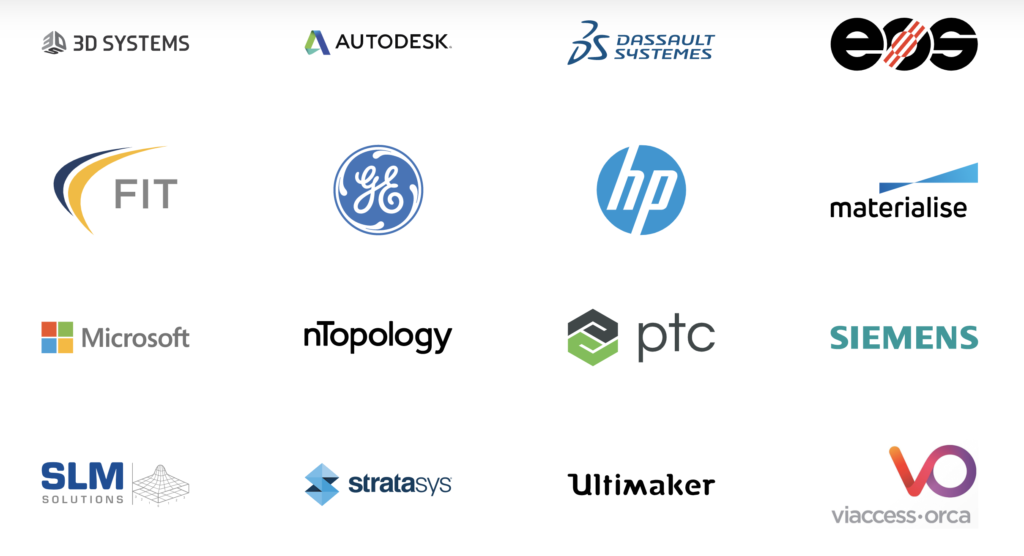We have always been limited by the lack of standards in 3D printing. In software, especially, not having a clear overall roadmap or plan for the entire software toolchain and ecosystem for 3D printing has retarded our progress. We’ve been locked into antiquated de facto standards as a result of this. The STL file type, for example, is hilariously bad at conveying the shape of things that need to be printed in an efficient manner. Furthermore, with gradient materials, full-color printing and parameterization on the horizon, the STL simply will not suffice. The file type was not designed to be extensible to the extent that it could, in a lightweight way, contain this kind of information. Alongside our manufacturing push as an industry, we should also clean house and out out out with the cobwebs of old. A new digital foundation for digital manufacturing has always been the aim of the 3MF Consortium.

They proposed a 3MF file type that would be able to describe and convey all of the necessary manufacturing info as well as do a better job of describing the geometry and materiality of the objects made with 3D printing. When dealing with manifold and non-manifold objects, as well as allowing for colors and supports, its genuinely a much better choice. 3MF adoption has, however, been glacial at best. Many were wary of the big company Consortium. Also, “Consortium” sounds like a more organized form of a Cabal that secretly runs an exploitative labor ridden banana republic run by men in Broncos and bad suits, ripe for overthrow by the A-Team aided by welding equipment and a ragtag gaggle of newly emancipated workers. Despite this, software packages and firms are slowly adopting 3MF and, over the last five years, adoption has been growing. This is sure to accelerate now, however, as 3MF has joined the Linux Foundation.

3MF has also announced that former Executive Director, Microsoft’s Adrian Lannin, has been replaced by the newly elected Luis Baldez, of HP. Baldez is the former manager of HP’s 3D printing software and currently is Market Development Manager for HP’s 3D Printing business.
Of the news, Baldez said that,
“The 3MF Consortium has done the important work to create an open standard for 3D printing. The time is now to drive the evolution of 3MF from development to implementation. We would not be where we are today without Adrian Lannin’s leadership and contributions, and we’re looking forward to his insights as our ongoing advisor.”
Autodesk’s 3D Printing leader, Alexander Oster, who heads the 3MF technical working group, stated,
“Luis is a longtime champion of open standards and is an expert in the 3D printing space. Luis’ leadership and our collaboration with Linux Foundation will accelerate our work on 3D printing and help us build an even more vibrant network of contributions.”
The Linux Foundation has the financial wherewithal, as well as the clout with developers and with large technology companies, to really supercharge 3MF’s efforts. It should make everyone feel more secure about the future of 3MF and its “open-sourceness.” As an industry, we really deserve better files that—in a more detailed, easier, and capable way—encapsulate all of the things we want to make. I personally still want StuffDNA, but really do like 3MF’s efforts to really make a new 3D printing software scaffolding for a new 3D printing era.
The core goals of 3MF for our file format is to give us a format that is:
Complete: Containing all of the necessary model, material and property information in a single archive
Human Readable: Using common structures such as OPC, ZIP, and XML to ease development
Simple: A short, clear specification, making development easy and validation fast
Extensible: Leveraging XML namespaces allow for both public and private extensions while maintaining compatibility
Unambiguous: Clear language and conformance tests ensure a file is always consistent from digital to physical
Free: Access to and implementation of the 3MF specification is and will always be free of royalties, patents and licensing
This is laudable and by having its development anchored by the Linux Foundation should ensure that given enough eyeballs all things will be shallow. You can find the 3MF files on GitHub file repositories such as YouMagine and use it with Fusion360, PrusaSlicer or SolidWorks.
Subscribe to Our Email Newsletter
Stay up-to-date on all the latest news from the 3D printing industry and receive information and offers from third party vendors.
You May Also Like
NSF Awards Kentucky $1M for Advanced Manufacturing
The National Science Foundation has awarded a $1 million grant to the University of Louisville for the Advancing Manufacturing and Building Construction Technologies (NSF AMT) project. This initiative is part...
3D Printing News Briefs, May 11, 2024: 3D Printed Stent, Tower, Sculptures, & More
We’re starting off with medical research in today’s 3D Printing News Briefs, as researchers in Korea used CT images and 3D printing to fabricate an educational simulator for a mastoidectomy....
3D Printing Unpeeled: Wind Turbines, Probiotics and Lenses
TPI Composites, ORNL and Ingersoll Rand are working to make wind turbine tooling segments that can be 18.3 meters long. These elements also include resistive wires that help keep the...
Tethon 3D Releases Cost-effective Bioprinter
Tethon 3D, known for its ceramic-loaded DLP materials, custom resins, and DLP 3D printers, has recently released a bioprinter. Vat polymerization printers like DLP systems have been widely used by...
































